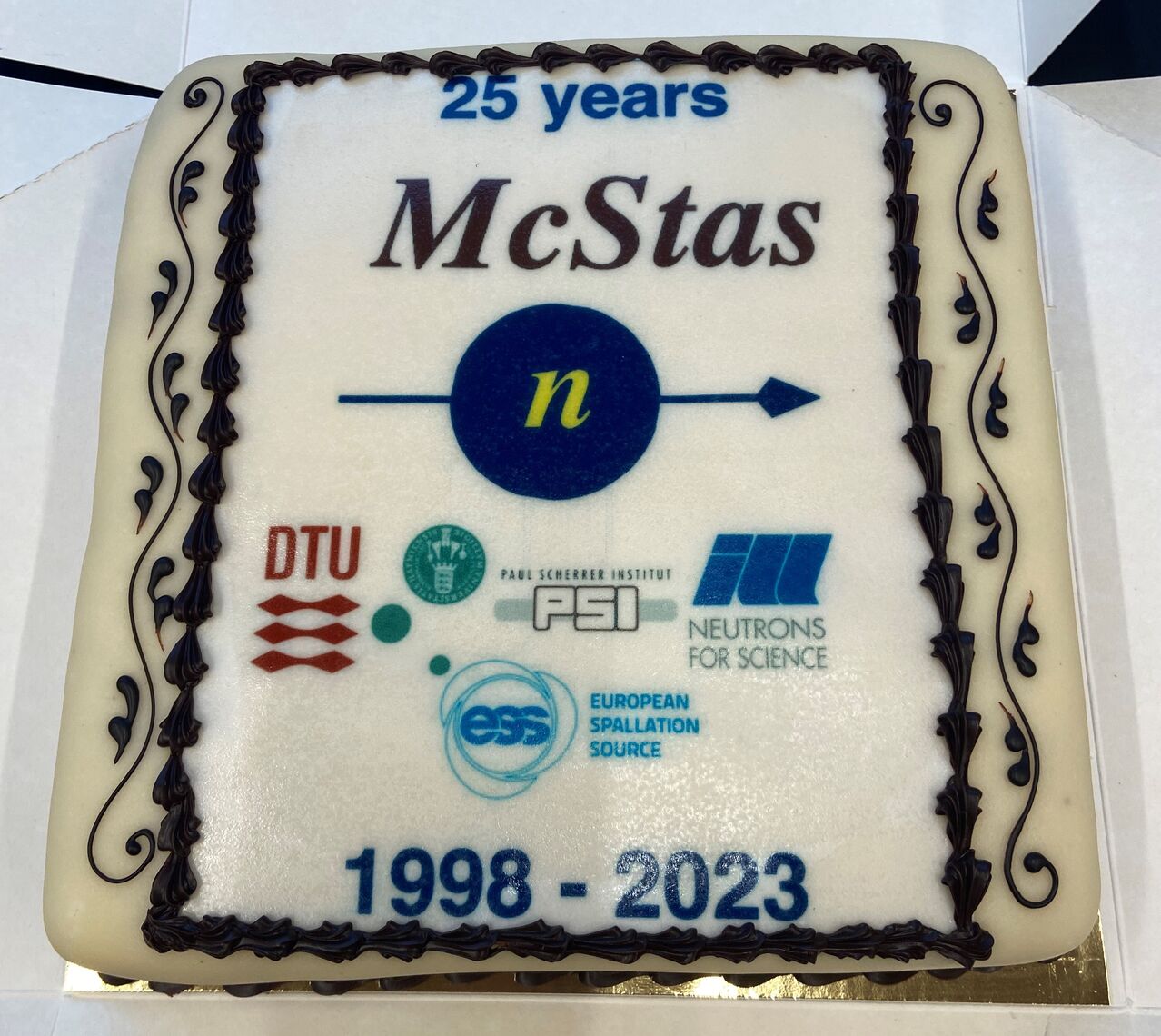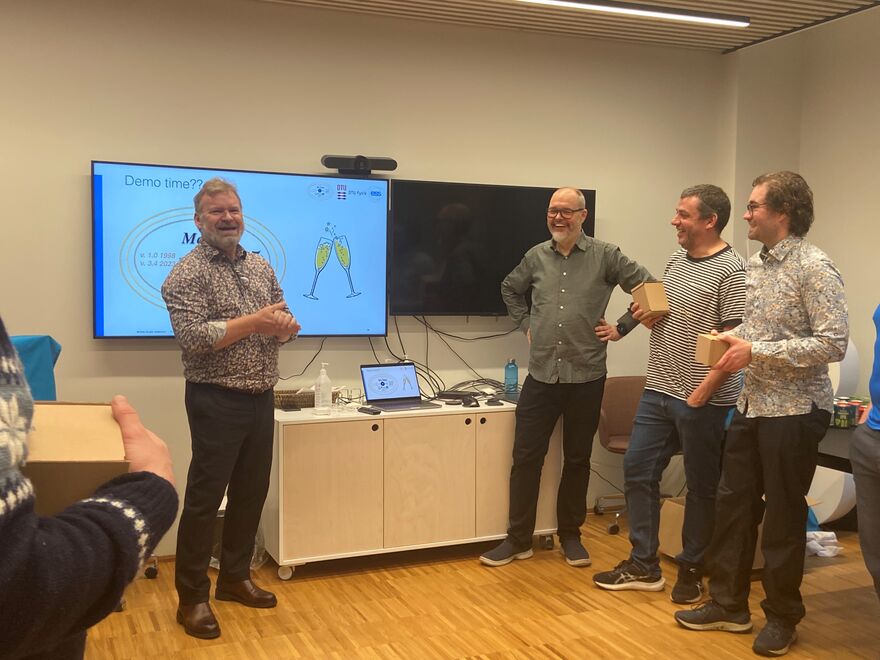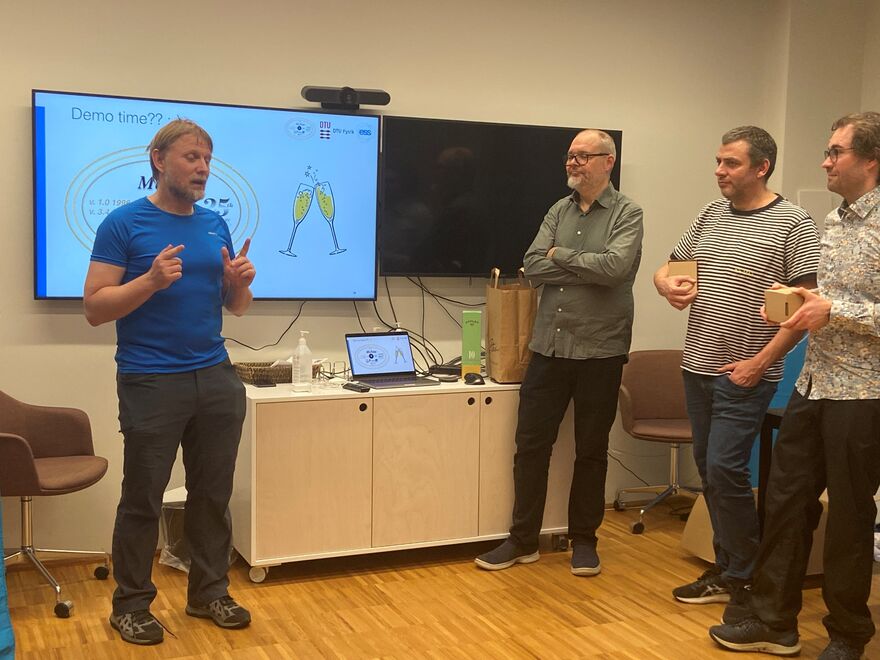
The 25th-anniversary celebration of the McStas collaboration took place on the afternoon of November 16th, co-hosted by ESS DMSC and DTU Physics.
Commencing its journey at Risø National Laboratory in the spring of 1997, the McStas software commemorated its 25th year since the release of version 1.0 in October 1998. Over the years, the project expanded into an international collaboration, with notable contributions from institutions such as Institut Laue-Langevin (ILL) and The Paul Scherrer Institute (PSI). In 2007, Risø became part of DTU, and since 2012, the ongoing development of McStas found a new home at DTU Physics, actively collaborating with the Niels Bohr Institute, ILL, PSI, and ESS.
As an open-source software, McStas has benefited from widespread contributions by individual researchers from facilities and universities globally, enriching the codebase with new features and functionality.
McStas has evolved into the leading software globally for neutron scattering simulations, particularly in the realms of instrument design, optimization, and virtual experiments. Notably, the software played a crucial role in designing and optimizing most of the ESS instruments currently under construction in Lund, Sweden.
During the anniversary event, Peter Willendrup, the lead developer and technical-scientific support for the McStas user community since 2002, provided a comprehensive overview of the 25-year development journey, highlighting key contributions from various contributors. Peter is Senior Research Engineer at DTU Physics and ESS DMSC. Mads Bertelsen, the author of McStasScript, guide_bot, and Union presented his work on these significant developments. Mads is recently appointed to a permanent position as Scientist at ESS DMSC.
Several event participants delivered short speeches in honor of the McStas collaboration, including Kurt Clausen, originator of the "simulation framework" idea and grant holder of the first EU funding for McStas, Kim Lefmann founder and member of the McStas team since the start , Kristian Nielsen, the computer scientist who engineered the initial code-generator technology, and Thomas Holm Rod, head of the ESS DMSC.


























